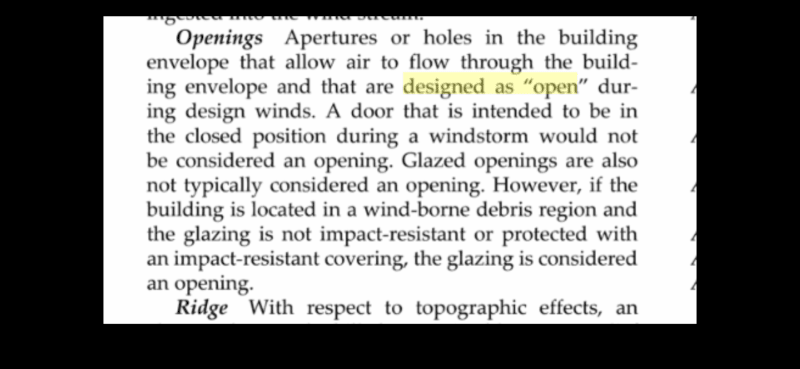haynewp
Structural
- Dec 13, 2000
- 2,327
I had a question today that is exactly like this, whether doors should be considered openings in deciding if partially enclosed should apply. thread507-375034.
I found this from an old FEMA document.

Has anyone received an opinion from ASCE about this?
I found this from an old FEMA document.

Has anyone received an opinion from ASCE about this?

![[glasses] [glasses] [glasses]](/data/assets/smilies/glasses.gif)